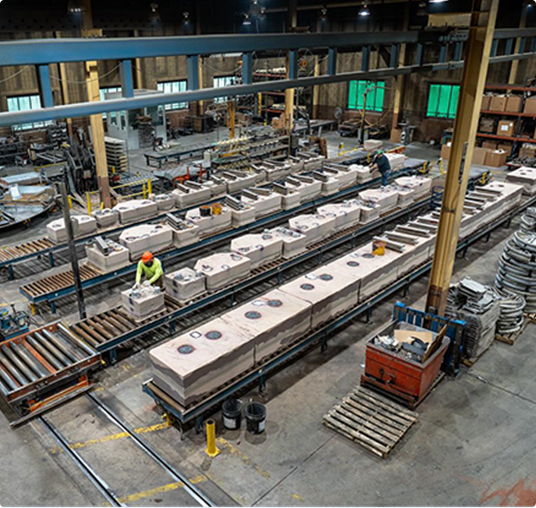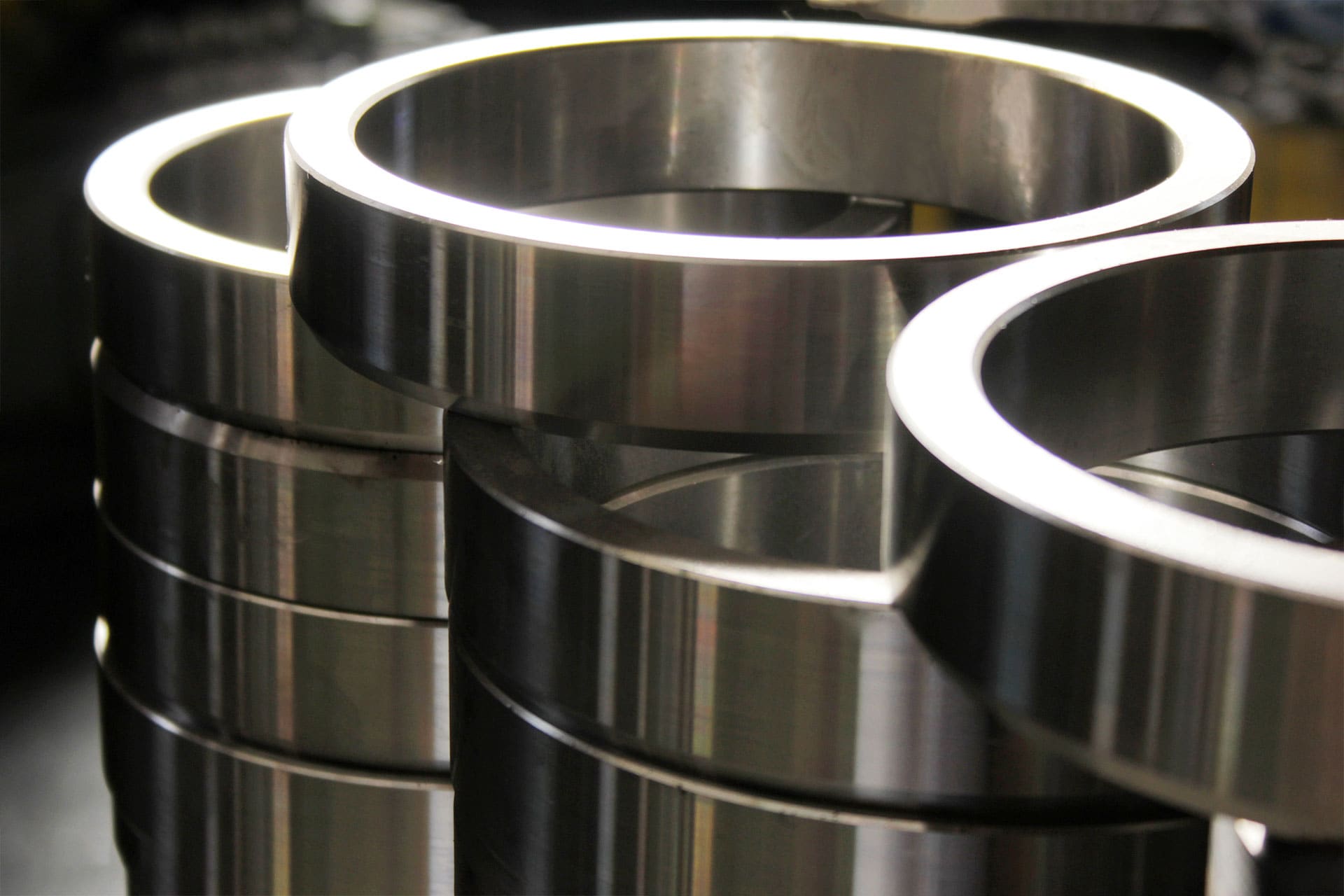How precision Metal Castings help better engineering results
Wiki Article
Discovering the Conveniences and Practical Use Aluminum Castings in Today's Market
Light weight aluminum castings have actually ended up being progressively relevant in various industries as a result of their unique qualities. Their light-weight nature and resistance to corrosion make them appropriate for demanding applications. In addition, the superior strength-to-weight proportion offers significant benefits in style and production. As industries remain to discover their possibility, the complete scope of aluminum castings' applications and advantages remains to be totally uncovered. What exists in advance for this functional material?The Lightweight Benefit of Aluminum Castings
Although several products are utilized in manufacturing, aluminum castings stick out mainly due to their lightweight homes. This characteristic makes aluminum spreadings an attractive option for numerous markets, particularly in aerospace and vehicle applications, where weight reduction is crucial for improving fuel performance and efficiency. The lightweight nature of light weight aluminum permits makers to create parts that are much easier to mount and take care of, eventually minimizing labor expenses.Additionally, the capability to generate complicated shapes without substantial weight fines enables designers to introduce while maintaining architectural integrity. Light weight aluminum castings can effectively change heavier products, causing substantial savings in delivery and functional costs. Their light-weight benefit also adds to improved product longevity, as lighter components often lead to reduced wear and tear on equipment. In general, the light-weight residential or commercial properties of light weight aluminum castings give producers with an one-upmanship, fostering improvements in item design and performance across different industries.

Remarkable Deterioration Resistance
Aluminum castings possess a natural resistance to oxidation, which significantly improves their long life in numerous environments. This inherent home not just adds to their longevity but likewise lines up with the light-weight benefit that light weight aluminum uses. Consequently, light weight aluminum spreadings are significantly identified for their exceptional rust resistance in numerous applications.
Naturally Resistant to Oxidation
Among the standout characteristics of aluminum spreadings is their extraordinary corrosion resistance, which originates from a natural oxidation process. When exposed to air, light weight aluminum responds to create a thin, safety layer of aluminum oxide. This layer works as an obstacle against further oxidation and secures the underlying metal from destructive aspects such as moisture and salts. Unlike other metals, this oxide layer is self-repairing; if harmed, it promptly reforms when revealed to air. This special residential or commercial property improves the longevity of light weight aluminum spreadings in different settings, making them suitable for applications in markets such as aerospace, automotive, and marine. The all-natural resistance to oxidation considerably lowers upkeep costs and boosts the dependability of light weight aluminum castings in requiring problems.Light-weight Sturdiness Benefit
The light-weight nature of aluminum spreadings adds significantly to their sturdiness, making them a useful choice in numerous sectors. This exceptional resilience is mostly associated to light weight aluminum's inherent resistance to rust, which is enhanced further via anodizing and various other surface treatments. Unlike many steels, light weight aluminum does not rust; instead, it creates a protective oxide layer that guards it from environmental damages. This property is particularly useful in sectors such as automobile and aerospace, where weight decrease is essential without jeopardizing stamina. Additionally, the long life of aluminum spreadings reduces upkeep prices and substitutes, offering economic advantages in time. Subsequently, their lightweight sturdiness and corrosion resistance position aluminum castings as an exceptional material for modern production applications.Superior Strength-to-Weight Proportion
A remarkable characteristic of light weight aluminum spreadings is their exceptional strength-to-weight ratio, that makes them extremely preferable in various applications. This intrinsic residential or commercial property permits light weight aluminum spreadings to hold up against significant tension while staying lightweight, a vital element in markets such as aerospace, vehicle, and manufacturing. Designers often favor aluminum spreadings for elements that call for both durability and reduced weight, boosting gas effectiveness and efficiency.The high strength-to-weight ratio also helps with the layout of detailed forms and structures, making aluminum castings versatile for complex applications. The ability to keep architectural honesty under tough conditions warranties long life and reliability in products, from airplane frames to automobile parts. This benefit adds to the expanding trend of making use of aluminum spreadings in ingenious styles, eventually bring about boosted capability and effectiveness across varied industries. The superior strength-to-weight ratio of light weight aluminum castings places them as a crucial product in contemporary design and manufacturing.
Cost-Effectiveness in Manufacturing
Cost-effectiveness in light weight aluminum spreading production is mostly accomplished via lowered material waste and reliable manufacturing procedures. By maximizing designs and utilizing advanced methods, makers can lessen excess material use while maintaining quality criteria. This method not only lowers manufacturing costs yet likewise adds to a lot more sustainable practices within the market.Minimized Product Waste
Decreasing product waste in aluminum casting processes greatly improves production efficiency. By optimizing the style and manufacturing strategies, companies can decrease excess scrap and improve resource application. This reduction in waste not just lowers product costs but also contributes to an extra lasting manufacturing design. The capability to recycle aluminum more supports cost-effectiveness, permitting producers to reclaim and reuse products without jeopardizing top quality. As the sector increasingly concentrates on sustainability, reduced product waste lines up with environmental objectives while concurrently enhancing productivity. Ultimately, reliable use raw materials strengthens the competitive setting of businesses in the market, making light weight aluminum spreadings a favorable option in different applications. The tactical technique to decreasing waste mirrors a commitment to both financial and ecological obligation.Effective Manufacturing Processes
While standard manufacturing procedures can incur significant expenses, aluminum casting supplies an extra reliable choice that enhances overall manufacturing profitability. This technique minimizes product waste and permits for precise control over the manufacturing procedure, bring about decreased labor and operational costs. The capability to produce complex forms with less steps additionally improves production, contributing to much shorter preparations. Additionally, aluminum's lightweight nature and excellent thermal conductivity enable for power financial savings during manufacturing and in the last application. By making use of modern spreading innovations, makers can achieve greater throughput without sacrificing quality. As a result, aluminum casting stands out as a cost-effective service, making it an attractive choice for services intending to optimize their manufacturing procedures in today's affordable market.Convenience Across Industries
Light weight aluminum castings show amazing convenience throughout different markets, as they can be customized to fulfill details requirements and applications. In the automobile sector, light weight aluminum spreadings are utilized in engine blocks, transmission housings, and wheels, providing light-weight yet durable services that boost gas efficiency. The aerospace market also takes advantage of light weight aluminum spreadings, using them in structural elements and engine components due to their strength-to-weight ratio.In the customer products industry, makers employ light weight aluminum castings for items varying from cookware to furniture, offering both visual allure and functionality. The electronic devices market makes use of aluminum castings for real estates and warmth sinks, ensuring reliable thermal monitoring. In addition, the building and construction field leverages light weight aluminum castings for structural elements and building elements, improving durability and design adaptability. This broad applicability highlights aluminum castings as a crucial resource, satisfying the varied demands of different markets while keeping high efficiency and dependability.
Sustainability and Ecological Effect
As markets significantly prioritize sustainable methods, light weight aluminum spreadings become a green selection because of their recyclability and reduced ecological footprint. Light weight aluminum is one of one of the most recycled materials around the world, with the capability to be repurposed multiple times without destruction of top quality. This characteristic greatly minimizes the need for basic materials and power usage connected with key light weight aluminum production, which is energy-intensive.Furthermore, aluminum castings add to light-weight styles, leading to fuel effectiveness in transportation applications such as vehicle and aerospace sectors. Their durability and resistance to deterioration prolong product life-spans, further lessening waste and source usage gradually. Additionally, several producers are embracing responsible sourcing and eco-friendly manufacturing approaches, improving the sustainability of light weight aluminum casting procedures. On the whole, light weight aluminum spreadings stand for a sensible service for services intending to reduce their environmental influence while accomplishing performance and performance.
Technologies in Aluminum Casting Technologies
Current improvements in aluminum spreading modern technologies have actually significantly boosted the performance and high quality of production processes. Innovations such as 3D printing and advanced mold-making techniques have actually allowed producers to develop Metal Castings elaborate layouts with lowered product waste. This change not just improves the accuracy of cast parts yet likewise shortens lead times, enabling rapid prototyping and faster market access.
In addition, the unification of advanced computer simulations aids in forecasting possible problems throughout casting, bring about higher-quality outputs (Wisconsin Aluminum Foundry). Using light-weight alloys has additionally added to the growth of more powerful, a lot more resilient products, satisfying industries ranging from automobile to aerospace
Furthermore, automated spreading procedures have arised, decreasing human error and boosting manufacturing rate. Jointly, these developments are changing the aluminum spreading landscape, driving higher competitiveness and sustainability in manufacturing. As industries continue to develop, these technologies will play an essential duty in conference future demands for performance and high quality.
Often Asked Questions
Just How Do Aluminum Castings Compare to Various Other Metals in Regards To Thermal Conductivity?
Light weight aluminum spreadings exhibit remarkable thermal conductivity contrasted to lots of metals, such as steel and iron - Wisconsin Aluminum Foundry. Their lightweight nature and effective warm circulation make them perfect for applications calling for effective thermal management in numerous sectorsWhat Are the Common Issues Found in Aluminum Castings?
Typical issues in light weight aluminum spreadings include porosity, shrinking, incorporations, and surface abnormalities. These issues frequently occur from improper cooling rates, inadequate mold layout, or contaminations, affecting the general top quality and efficiency of the end product.Can Light Weight Aluminum Castings Be Recycled, and How?
Aluminum spreadings can be reused properly. The process involves collecting, melting, and changing the light weight aluminum, which decreases waste and saves resources. This reusing adds to sustainability while keeping the product's homes for future usage.What Are the Normal Lead Times for Light Weight Aluminum Casting Production?
Usually, preparations for aluminum casting production array from two to 6 weeks, depending upon factors such as complexity, tooling demands, and production quantity. Effectiveness can improve with well-known distributor partnerships and maximized production processes.How Does the Surface Complete Affect Light Weight Aluminum Casting Efficiency?
The surface area coating noticeably influences aluminum casting performance by influencing corrosion resistance, aesthetic top quality, and rubbing features. A smoother surface improves resilience and performance, while a rougher appearance can improve bond for succeeding coverings or treatments.Numerous products are made use of in manufacturing, light weight aluminum spreadings stand out primarily due to their light-weight homes. When exposed to air, aluminum responds to develop a slim, safety layer of light weight aluminum oxide. Cost-effectiveness in aluminum casting manufacturing is primarily attained with decreased product waste and reliable manufacturing procedures. Decreasing material waste in aluminum casting processes substantially enhances manufacturing efficiency. Ultimately, efficient usage of raw products strengthens the competitive setting of companies in the market, making light weight aluminum spreadings a positive option in different applications.
Report this wiki page